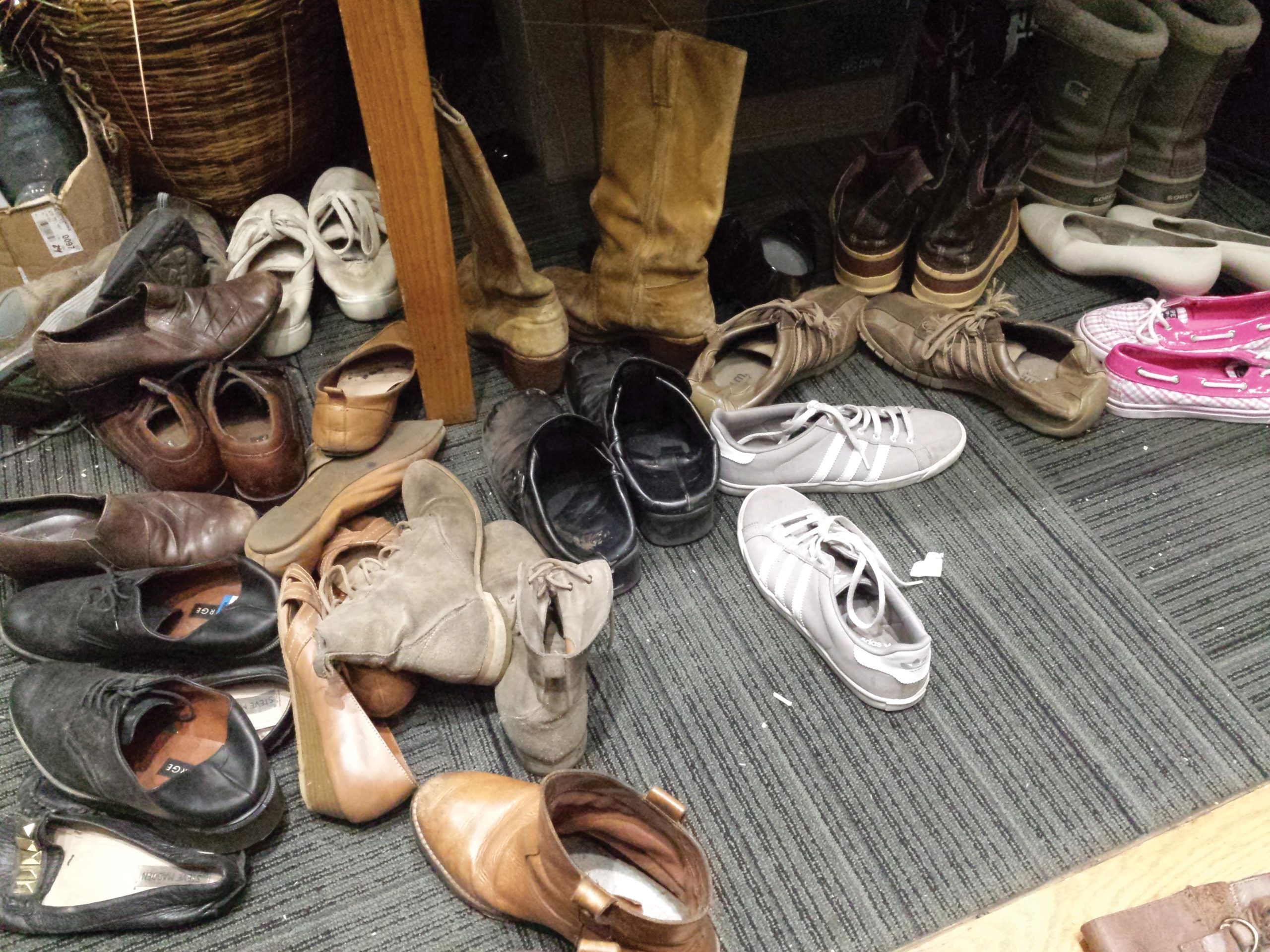By: Ryan Belbin
Footsteps, cabbage and movie magic, brought to life by the brother and sister duo of Hilary and Matthew Thomson
===
An unassuming string of row houses in downtown St. John’s hosts a magician’s lair, where a pit filled with kitty litter becomes crunching snow on a crisp winter morning and a knife through a head of cabbage transforms into a sinew-snapping murder scene. All you need to do is listen.
 The Newfoundland Independent Filmmakers Co-Operative (NIFCO) has been assisting local filmmakers through all the stages of turning an idea into a finished film since 1975. Siblings Hilary and Matthew Thomson play a unique role in that process – they’re present in every footstep and ruffle of clothing on the screen, yet the viewer disregards them entirely.
The Newfoundland Independent Filmmakers Co-Operative (NIFCO) has been assisting local filmmakers through all the stages of turning an idea into a finished film since 1975. Siblings Hilary and Matthew Thomson play a unique role in that process – they’re present in every footstep and ruffle of clothing on the screen, yet the viewer disregards them entirely.
The Magic of Foley
Their office is cluttered with a collection of household odds and ends, from old computer monitors and suitcases to car doors. Their job is the Foley – the best gig you never knew you needed.
As sound started finding its way into film in the 1920s, Jack Donovan Foley recognized that it wasn’t just dialogue that needed to be captured – the ambiance of everyday life is an integral part of the suspended disbelief of watching a film, but it’s difficult to get those sounds right during the filming.
Imagine you’re watching a character walk down a hallway. Now imagine if each footstep was silent (or, worse, out of sync) – would you even be able to pay attention to anything else?
The technology has changed drastically, but Foley’s early technique of projecting the film onto a screen while synchronizing the recording of these “human sounds” is very similar to what still happens at NIFCO. Matthew sits behind a row of computer monitors, engineering the technical aspects, while Hilary mimics every little thing that’s happening in the film in front of a microphone.
“We usually do a spot session first – we sit down, watch the whole thing, make notes of what props I need, anything that’s going to be tangly,” Hilary explains.
“We generally go through the whole film with feet, and then go back to the beginning again and do specs,” Matthew adds (specs being miscellaneous noises like laying a glass on a table). “Then we’ll go back a third time and do moves – so Hilary will do all the fabric sounds, leather jackets, things like that.”
All told, an average film takes around 8-10 very long days in the studio to make the Foley sound perfect.
Feet, Feet, and More Feet
Footsteps are the first part of the Foley process, and it’s easier said than done.
The studio itself has a grid of nine covered containers built into the floor – in each of them are different surfaces for walking, from poured concrete to beach rocks. On the underside of each covering are different wood surfaces as well. Dozens of different shoes litter the floor, and the microphone can be moved to different positions in the room to create different echoes. That’s literally thousands of combinations for footsteps, depending on what’s happening in the film
“It’s kind of like choreography,” Hilary says. “You watch how they move, and you’ve got to copy it. Watching the shoulders is a good key, so you can anticipate where the footfall is going to happen.”
“You just go into the zone, loosen all your muscles, and trust your gut. And their shoulders!”
Despite the fact that they’ve been doing Foley for years, the Thomsons still encounter sounds they’ve never had to replicate before. The Internet and a connected network of Foley artists allow for idea sharing, but a lot of ingenuity is still involved when the sounds source on the screen cannot practically be performed in the studio (hence the kitty litter and the cabbage).
“The key is breaking the sound down,” Hilary explains. “Say you’re kicking a vending machine – so you’ve got hard metal, you’ve got glass, you’ve got some stuff inside that’s shaking around. You break it down and then you just pile that stuff up. You re-record and you layer it up, and when you play them all back together, it’s got that whole sound in there.”
Once they’ve gone through the film three times, the Foley, together with audio, colour, and video editing, are all mastered so that the disparate parts of the post-production are blended together seamlessly. By the time it gets to the big screen, the monitors, dials, and Foley footsteps of the NIFCO row houses feel a long way away. And that’s just how these local artists want to keep it.
“If you’re walking too heavy, and the girl is just walking normal, it feels weird. It has to be believable,” Hilary says.
“That’s the funny thing about sound – when you don’t notice it, that’s when it’s done well,” Matthew adds.
